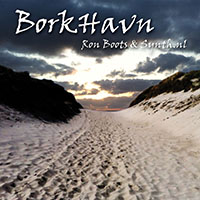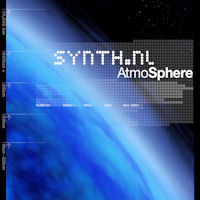 After finishing all the modules I soldered the power leads to them. The connectors and wire come separate and putting the wire on the connectors is a delicate job. The four pins that go into the connector itself are very small and you will need something to hold them while soldering. The Midi2CV8 module acts as the master power supply. The VCO is connected to that and the VCF in its turn is connected to the VCO and on the end of this Daisy chain is the VCA module. The next thing to do was to switch on the power and test everything. This is always a bit of an anxious moment :) PAIA even calls it the 'smoke' test. 'No smoke' off course is what you would like to see.
After finishing all the modules I soldered the power leads to them. The connectors and wire come separate and putting the wire on the connectors is a delicate job. The four pins that go into the connector itself are very small and you will need something to hold them while soldering. The Midi2CV8 module acts as the master power supply. The VCO is connected to that and the VCF in its turn is connected to the VCO and on the end of this Daisy chain is the VCA module. The next thing to do was to switch on the power and test everything. This is always a bit of an anxious moment :) PAIA even calls it the 'smoke' test. 'No smoke' off course is what you would like to see. The first module I tested was the Midi2CV8 module. There are some dip switches on it to configure its behavior. One of the test modes just gives a signal on all the outputs. You can measure them with a Volt meter or even better an oscilloscope. And yesterday my oscilloscope arrived to I used it right away. The test worked fine. The next thing to do is attach a midi keyboard and run a midi diagnostics test. This went perfectly as well. After that I just put the Midi2CV8 module in the mode I want to use it in and tested all the individual signals on the CV outputs. I worked like a charm :) So at least this module is working perfectly.
The first module I tested was the Midi2CV8 module. There are some dip switches on it to configure its behavior. One of the test modes just gives a signal on all the outputs. You can measure them with a Volt meter or even better an oscilloscope. And yesterday my oscilloscope arrived to I used it right away. The test worked fine. The next thing to do is attach a midi keyboard and run a midi diagnostics test. This went perfectly as well. After that I just put the Midi2CV8 module in the mode I want to use it in and tested all the individual signals on the CV outputs. I worked like a charm :) So at least this module is working perfectly. The next module to test is the VCO, but I didn't run all the official tests yet. I just hooked up my new oscilloscope to see how that worked actually. You can see in in the picture on the left. It is de device on the left. It was nice to see the different wave forms coming from the dual VCO module. And also the Envelope Generator. At first site this module seems to work as well. After that I powered up the remaining modules and again no smoke and the Envelope/Modulator leds blinked so the first impression is no major mistakes on all the boards. I still need to test a lot and also calibrate/tune everything. For that I also bought a frequency counter that is on the right in the picture. You can measure infrequencies very precisely with this device.
The next module to test is the VCO, but I didn't run all the official tests yet. I just hooked up my new oscilloscope to see how that worked actually. You can see in in the picture on the left. It is de device on the left. It was nice to see the different wave forms coming from the dual VCO module. And also the Envelope Generator. At first site this module seems to work as well. After that I powered up the remaining modules and again no smoke and the Envelope/Modulator leds blinked so the first impression is no major mistakes on all the boards. I still need to test a lot and also calibrate/tune everything. For that I also bought a frequency counter that is on the right in the picture. You can measure infrequencies very precisely with this device. I did forget to mention one thing by the way. I replaced one switch that PAIA supplied in the kit by a switch of my own. You were supposed to solder three wires to one little lead of the original switch and that one melted right away like I had before. I decided that repairing this one and trying again would have the same result. The new switch is a double one and doesn't melt. So this actually is my new power switch.
I did forget to mention one thing by the way. I replaced one switch that PAIA supplied in the kit by a switch of my own. You were supposed to solder three wires to one little lead of the original switch and that one melted right away like I had before. I decided that repairing this one and trying again would have the same result. The new switch is a double one and doesn't melt. So this actually is my new power switch.So far the 9700S project is going quite smoothly. I only found out that I'm missing 4 screws for one module to fasten it in the frac rack. I think I'm going to E-mail PAIA about this, because I would not know where to get identical screws. Next thing to do will be more testing and calibrating and tuning. I will keep you posted off course.










No comments:
Post a Comment